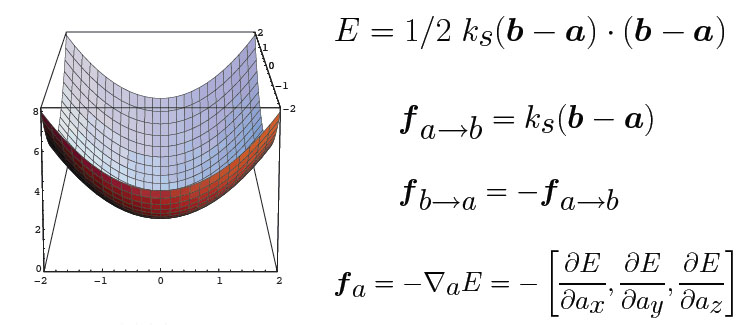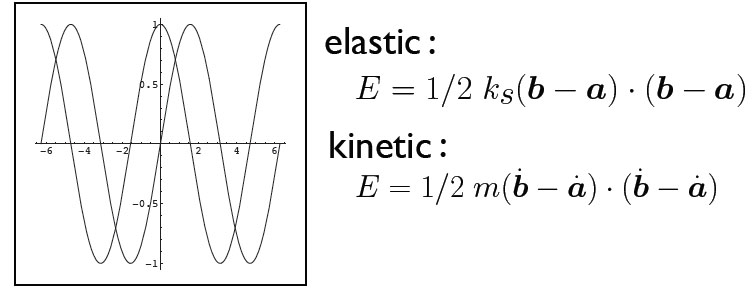Spring Mass Systems: A Simple Spring
PREVIOUS
< - - - - > CS
184 HOME < - - - - > CURRENT
< - - - - > NEXT
An idealized zero-length spring pulls the two endpoints together with a force proportiaonal to distance:

Action equal re-action: Equal and opposite forces on the two enpoints.
If one endpoint of the spring is fixed in space and the other end
of the spring is free to rotate then the free end has a potential
(elastic) energy that depends only on the distance from the fixed
point. If we plot this potential energy as a funtion of (x, y) with
z=0, then we obtain a paraboloid.

If a particle with mass is attached to the free end of the spring,
then the system has not only elastic potential energy, but also kinetic
energy proportional to the velocity squared of the mass:

Spring Constants
A single spring can be understood also as two or more spring segments glued together end-to-end.
These individual pieces would all have different spring constants -- depending on their lengths.
But if we characterize the "strain" in the various spring sections,
which is proportional to the fractional extension of the segments,
then we obtain a consistent characterization.

PREVIOUS
< - - - - > CS
184 HOME < - - - - > CURRENT
< - - - - > NEXT



